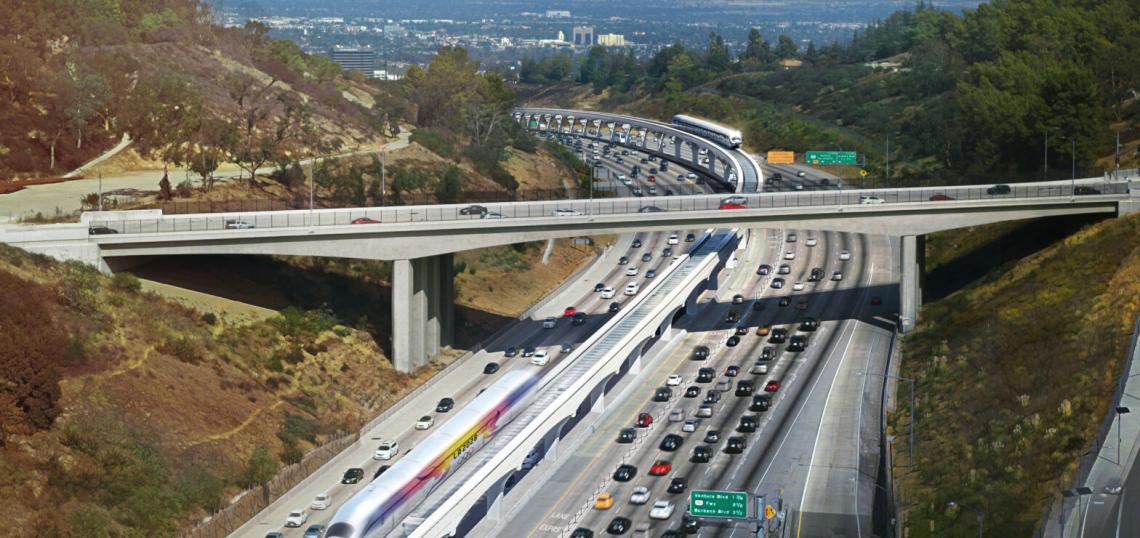Metro's search for a private sector team to build a monorail or heavy rail line through the Sepulveda Pass has narrowed to two candidates, the transportation agency announced last week.
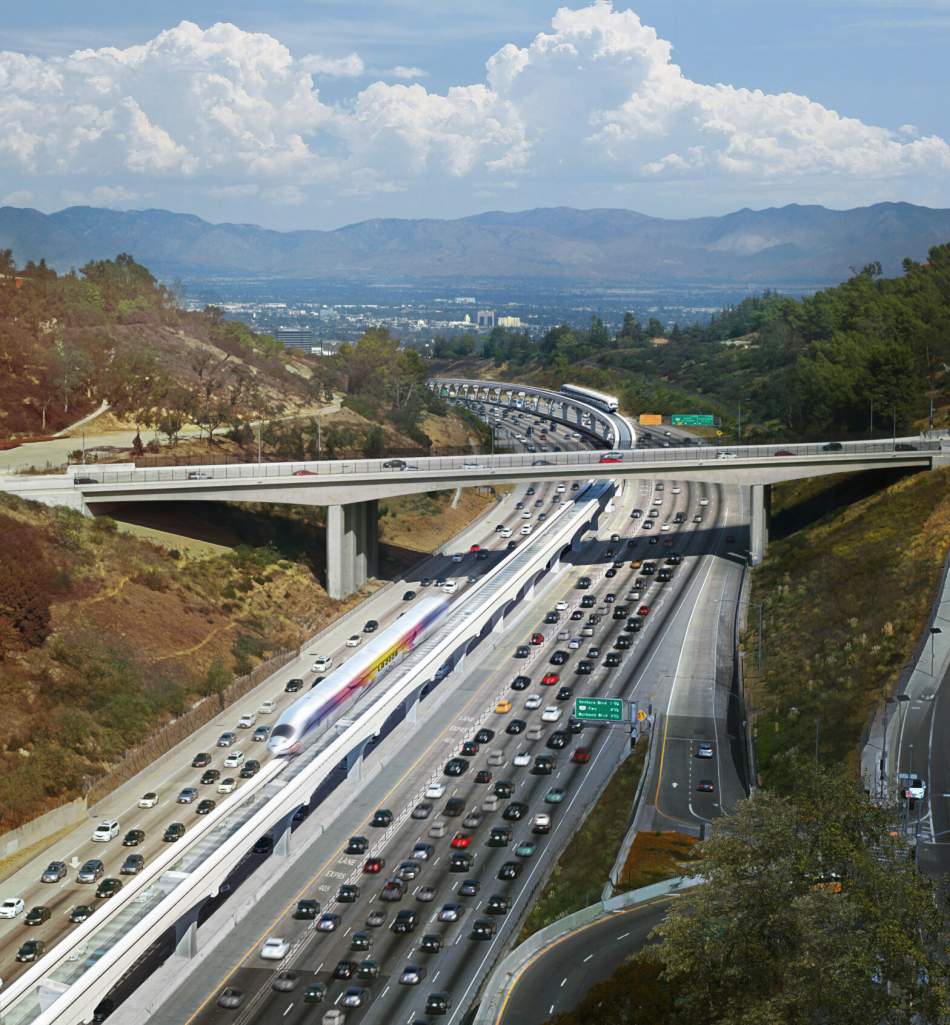 Conceptual rendering of a monorail viaduct in the median of the I-405 Freeway in the Sepulveda PassLA SkyRail Express
Conceptual rendering of a monorail viaduct in the median of the I-405 Freeway in the Sepulveda PassLA SkyRail Express
In March, Metro staff will recommend that the agency's Board of Directors vote to approve a $63.6-million contract with LA SkyRail Express and a $69.8-million contract with Sepulveda Transit Corridor Partners - Bechtel for pre-development work for the Sepulveda Transit Corridor project, which would connect the San Fernando Valley and the Westside.
LA SkyRail Express, which proposes the construction of a monorail running in the median of the I-405 Freeway, consists of:
- John Laing Investments Limited;
- BYD Transit Solutions, LLC;
- HDR Engineering;
Sepulveda Transit Corridor Partners - Bechtel, which proposes a heavy-rail system similar to the Metro's B and D Lines, includes:
- Bechtel Development Company, Inc.;
- Bechtel Infrastructure Corporation; and
- Meridiam Sepulveda, LLC.
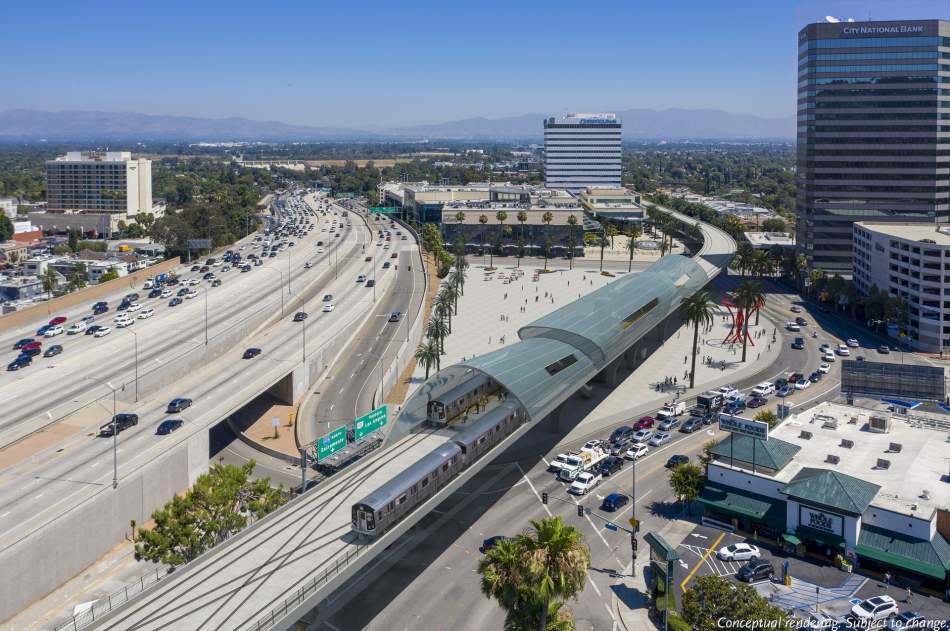 Conceptual rendering of a heavy rail station in Sherman OaksMetro
Conceptual rendering of a heavy rail station in Sherman OaksMetro
Per a staff report scheduled to be presented at the February 18 meeting of the Metro Board's Executive Management Committee, the SkyRail express proposal calls for a fully aerial alignment with automated vehicles. The total cost of their project, estimated at $6.1 billion, would provide a one-way trip from the Valley to the Westside in approximately 24 minutes.
Likewise, the Bechtel proposal also calls for automated operations - but using traditional heavy rail technology. Trains would run on aerial structures and within a single-bore tunnel between the Valley and the Westside, with an end-to-end trip of 19.7 minutes. The total cost of the heavy rail alternative, which would run below grade for 62 percent of its route, is estimated at $10.8 billion.
Other concepts which were not recommended for consideration included a proposal to build the Sepulveda Pass project as a below-grade extension of the future East San Fernando Valley light rail line - which is scheduled to break ground in 2022 - permitting a one-seat right from as far north as Pacoima.
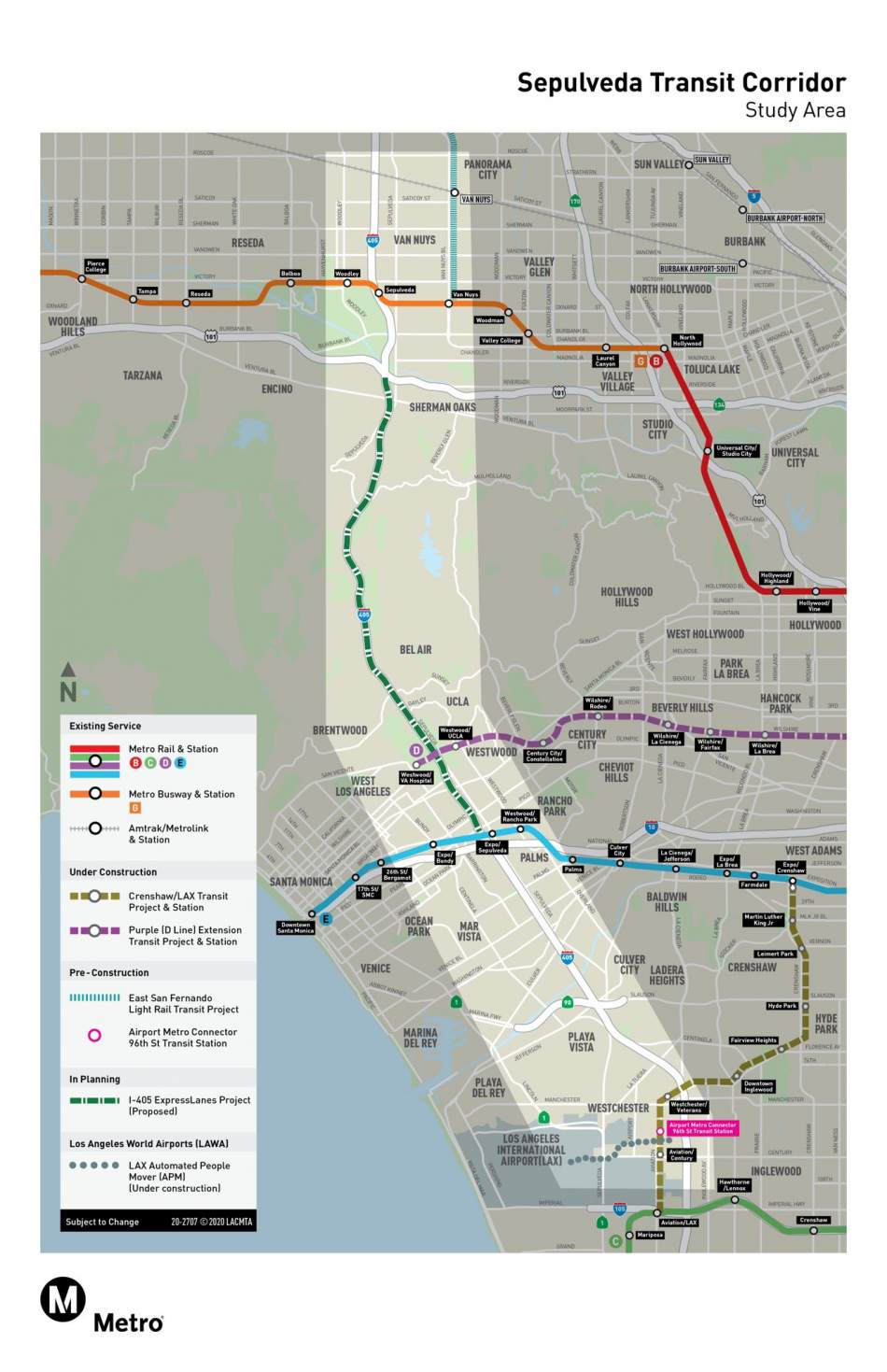 Sepulveda transit corridor study areaMetro
Sepulveda transit corridor study areaMetro
The alignments being considered for the Sepulveda project all originate at the Van Nuys Metrolink Station, and then proceed south via either Sepulveda or Van Nuys Boulevard within a tunnel or on a viaduct. Metro eventually hopes to offer trips between the Valley and the Westside - with transfers to the D and E Lines - in 30 minutes or less. An eventual extension south to Los Angeles International Airport - with a transfer to the Crenshaw/LAX and C Lines - would result in a 40-minute end-to-end trip.
Funding for the Sepulveda Transit Corridor, as detailed in the Measure M expenditure plan approved by Los Angeles County voters in 2016, totals $9.7 billion across three phases. The second phase, which would include the rail connection between the San Fernando Valley and Westwood, is allotted $5.7 billion.
The pending vote by the Metro Board on contracts with Bechtel and the SkyRail Express team would not guarantee that either project is built. Metro is scheduled to begin its environmental review for the Sepulveda Transit Corridor later this year, and will study both the monorail and heavy rail concepts. After a selecting a locally preferred alternative, one of the teams would have the opportunity to submit a bid to build the line.
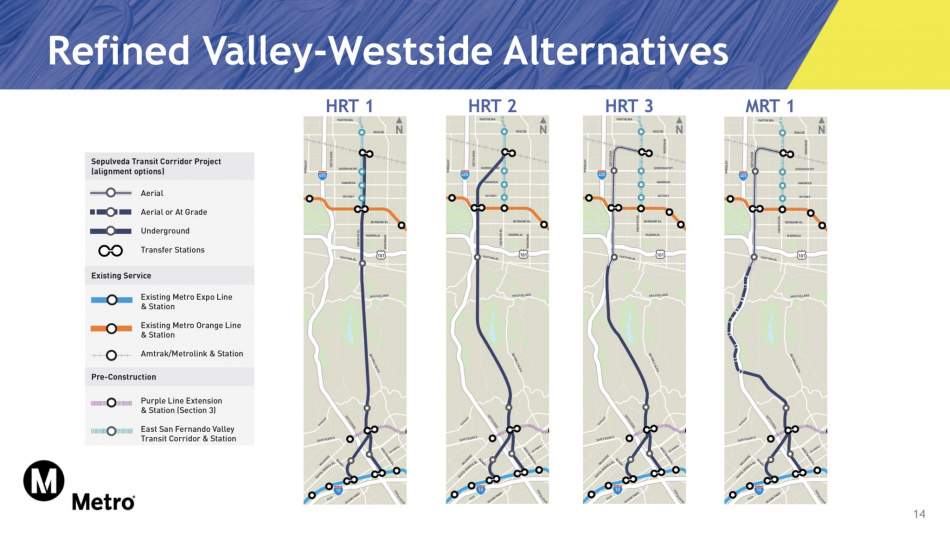 Potential alignments for a Valley-Westside rail lineMetro
Potential alignments for a Valley-Westside rail lineMetro
Metro past ridership forecasts for the Sepulveda rail line have estimated that the project would attract between 122,000 and 137,000 daily riders based on 2042 conditions. Construction is expected to occur in phases between 2033 and 2059.
- Sepulveda Transit Corridor (Urbanize LA)




